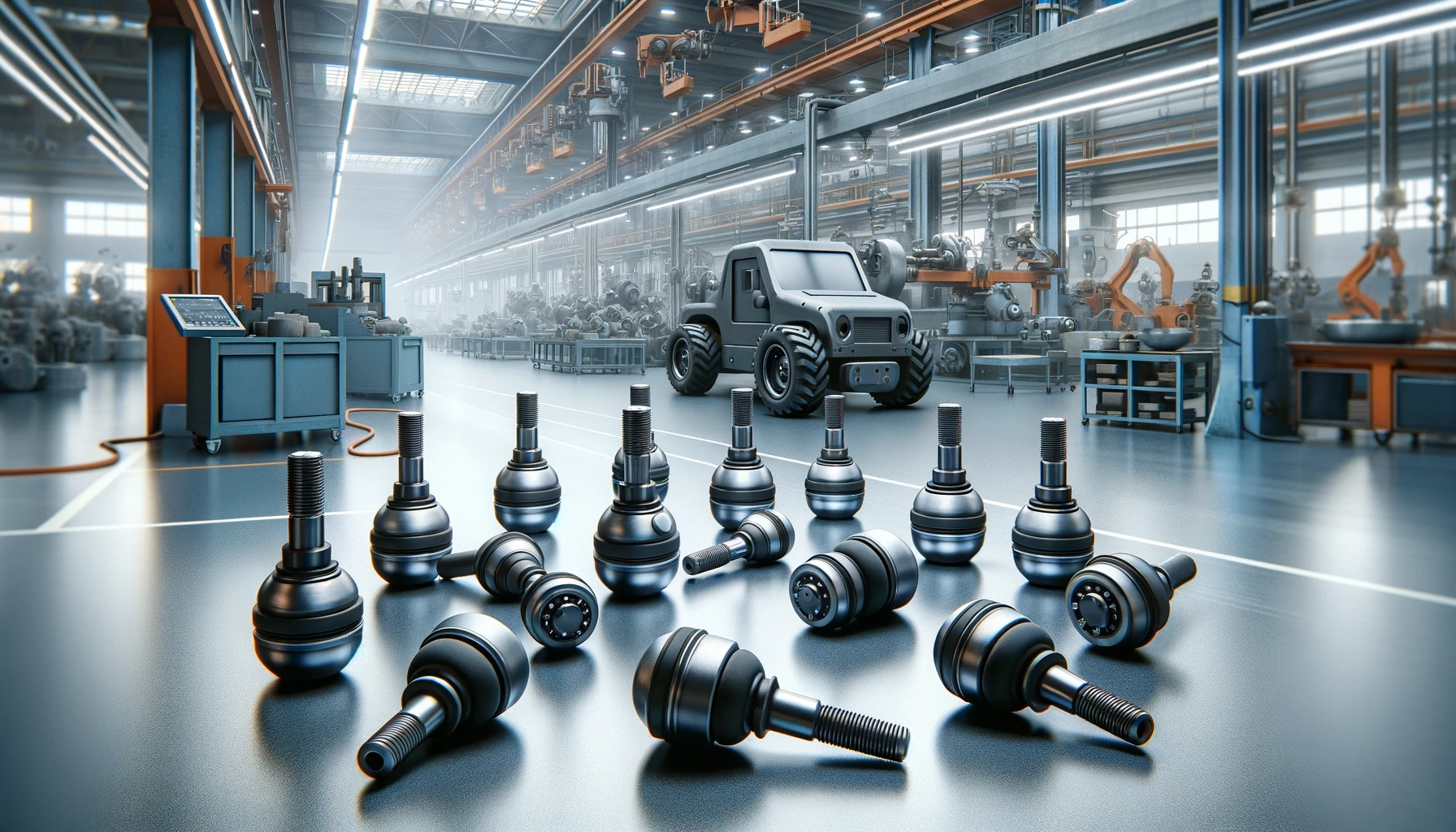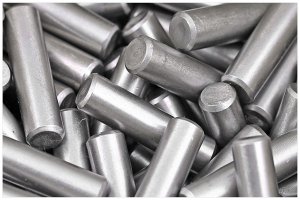What Are the Technical Challenges in Machining Carbon Steel for Automotive Ball Joints?
Machining carbon steel for automotive ball joints involves several technical challenges that must be addressed to achieve high-quality, reliable parts. Understanding these challenges is crucial in selecting the right CNC machining partner.
1. Material Hardness and Tool Wear
Carbon steel’s hardness contributes to its durability but also causes rapid tool wear. This necessitates frequent tool changes, increasing downtime and production costs. The selection of suitable cutting tools and optimization of machining parameters are essential to mitigate this challenge.
2. Heat Generation and Management
High-speed machining generates significant heat, which can affect both tool life and the integrity of the workpiece. Effective heat management through coolants and controlled cutting parameters is crucial to maintaining dimensional accuracy and surface quality.
3. Surface Finish Requirements
Achieving the required surface finish on carbon steel ball joints is challenging due to the material’s toughness. Surface defects such as roughness and irregularities can impact the performance and longevity of the ball joints. Advanced cutting tools and finishing processes are necessary to meet these specifications.
4. Maintaining Tight Tolerances
Ball joints require precise dimensional accuracy to ensure proper fit and function within the automotive system. Maintaining tight tolerances during machining is critical but challenging due to the material properties and machine capabilities.
5. Chip Formation and Evacuation
Efficient chip formation and removal are vital to prevent tool damage and ensure a smooth machining process. Carbon steel tends to produce long, continuous chips that can entangle with the tool, necessitating effective chip-breaking strategies and coolant systems.
How to Evaluate the CNC Machining Capabilities of a Potential Partner?
Evaluating the CNC machining capabilities of a potential partner is essential to ensure they can meet your specific needs for carbon steel automotive ball joints. Here are key factors to consider:
1. Technical Expertise and Experience
Assess the partner’s technical expertise and experience in machining carbon steel and automotive components. Look for a proven track record in producing high-precision parts, particularly ball joints. Experience with similar projects indicates their ability to handle the complexities of your requirements.
2. Advanced Machinery and Technology
Ensure the partner uses state-of-the-art CNC machines and technology. Advanced machinery, such as multi-axis CNC machines and high-speed machining centers, can handle the complexities of precision machining, providing better accuracy and surface finishes.
3. Quality Control Systems
A robust quality control system is crucial. The partner should have certifications like ISO 9001 and employ rigorous inspection processes, including in-process and post-process inspections, to ensure high-quality output.
4. Customization and Flexibility
The ability to customize machining processes to meet specific requirements is important. A flexible partner can adapt to changing needs and provide tailored solutions for unique challenges.
5. Communication and Support
Effective communication and support throughout the project lifecycle are essential. Choose a partner who is responsive, transparent, and willing to collaborate closely to achieve the desired outcomes.
Example Table: Evaluating CNC Machining Partners
| Criteria | Supplier A | Supplier B | Supplier C |
|---|---|---|---|
| Technical Expertise | 10+ years | 5 years | 15+ years |
| Advanced Machinery | Yes | Yes | No |
| Quality Control Systems | ISO 9001 | In-house QC | ISO 9001 |
| Customization | High | Medium | High |
| Communication and Support | Excellent | Good | Excellent |
What Quality Control Measures Should a CNC Machining Partner Implement?
Quality control is a critical aspect of precision CNC machining, especially for automotive components like carbon steel ball joints. Implementing stringent quality control measures ensures that the final products meet the required specifications and standards.
1. In-Process Inspection
In-process inspection involves monitoring and measuring the machining process in real-time. This includes checking dimensions, surface finish, and other critical parameters during the machining operation to detect and correct any deviations immediately.
2. Post-Process Inspection
Post-process inspection involves a comprehensive examination of the finished parts. This includes dimensional inspection using coordinate measuring machines (CMMs), surface roughness testing, and hardness testing to ensure that the parts meet the specified tolerances and quality standards.
3. Statistical Process Control (SPC)
SPC involves using statistical methods to monitor and control the machining process. By analyzing data from the production process, SPC helps in identifying trends, detecting variations, and implementing corrective actions to maintain consistent quality.
4. Certification and Compliance
Ensuring that the CNC partner adheres to industry standards and certifications, such as ISO 9001, is crucial. These certifications demonstrate the partner’s commitment to quality and their ability to meet stringent quality requirements.
5. Traceability and Documentation
A reliable CNC machining partner should maintain detailed documentation and traceability for all parts produced. This includes tracking material batches, machining parameters, and inspection results to ensure accountability and quality assurance.
Case Study:
A leading automotive manufacturer partnered with a CNC machining company that implemented robust quality control measures, including in-process inspections and SPC. As a result, the defect rate for their carbon steel ball joints was reduced by 50%, leading to significant cost savings and improved product reliability.
Assessing the Role of Advanced CNC Technologies in Machining Automotive Components
The integration of advanced CNC technologies has revolutionized the machining of carbon steel automotive components, offering significant improvements in precision, efficiency, and overall quality.
1. Multi-Axis CNC Machines
Multi-axis CNC machines, such as 5-axis machining centers, allow for complex geometries and intricate designs to be machined with high precision. These machines provide greater flexibility and reduce the need for multiple setups, enhancing accuracy and efficiency.
2. Real-Time Monitoring and Adaptive Control
Advanced CNC machines are
equipped with real-time monitoring systems that provide continuous feedback on machining parameters. Adaptive control systems can make immediate adjustments to maintain optimal machining conditions, optimizing performance and preventing issues such as tool wear and thermal expansion.
3. High-Speed Machining (HSM)
HSM technology enables higher spindle speeds and feed rates, reducing machining time while maintaining or improving surface finish quality. HSM is particularly beneficial for machining carbon steel, as it minimizes heat buildup and enhances tool life.
4. Advanced CAM Software
Computer-Aided Manufacturing (CAM) software facilitates precise programming, simulation, and optimization of machining processes. Advanced CAM software helps in creating efficient tool paths, reducing machining time, and ensuring consistent quality.
Example Case:
An automotive manufacturer integrated multi-axis CNC machines and advanced CAM software into their production line for carbon steel components. This allowed for the machining of complex parts with tight tolerances in a single setup. The use of real-time monitoring and adaptive control systems reduced tool wear and improved surface finish quality, resulting in a 25% increase in production efficiency and a 15% reduction in scrap rates.
5. Automation and Robotics
Automation technologies, such as robotic loaders and unloaders, enhance production efficiency by reducing manual handling and minimizing human error. Automated systems ensure consistent quality and enable high-volume production runs.
6. Data-Driven Decision Making
The use of data analytics in CNC machining enables better decision-making by analyzing machining data, predicting tool wear, and optimizing processes. Data-driven insights lead to improved productivity, quality, and cost-effectiveness.
Case Study: Successful Collaboration with a CNC Machining Partner
Collaborating with the right CNC machining partner can lead to significant improvements in the production of carbon steel automotive ball joints. Here’s a case study highlighting a successful collaboration:
Background
An automotive manufacturer needed high-precision carbon steel ball joints for their new line of vehicles. The ball joints required tight tolerances, high surface finish quality, and consistent performance.
Challenges
- Material Hardness: The carbon steel used was hard, leading to rapid tool wear and frequent tool changes.
- Tight Tolerances: Maintaining tight dimensional tolerances was critical for the proper fit and function of the ball joints.
- Surface Finish: Achieving a high-quality surface finish was essential to reduce friction and wear.
Solutions Implemented
- Tool Material and Coating: The CNC partner selected carbide tools with a titanium aluminum nitride (TiAlN) coating, which offered better wear resistance and heat dissipation.
- Cutting Parameters Optimization: Cutting speeds and feed rates were optimized to balance heat generation and machining efficiency.
- Advanced Coolant System: A high-pressure coolant system was implemented to improve heat dissipation and chip evacuation.
- Quality Control Measures: Rigorous in-process and post-process inspections were conducted to ensure dimensional accuracy and surface finish quality.
Results
- Increased Tool Life: Tool life increased by 40%, reducing downtime and tooling costs.
- Improved Surface Finish: The ball joints consistently achieved the required surface finish quality.
- Enhanced Dimensional Accuracy: The parts met tight tolerance specifications, ensuring proper fit and function.
Conclusion
The successful collaboration resulted in high-quality carbon steel ball joints that met the automotive manufacturer’s stringent requirements. The partnership demonstrated the importance of selecting a CNC machining partner with the right expertise, technology, and quality control measures.
Other Articles You Might Enjoy
- What Factors Should You Consider When Selecting a Precision CNC Machining Partner for Carbon Steel?
What Are the Key Technical Challenges in Precision CNC Machining of Carbon Steel? Precision CNC machining of carbon steel involves several technical challenges that need to be addressed to achieve…
- Precision CNC Machining of Steel: High-Volume Production
Precision CNC Machining and High-Volume Production As an integral part of modern manufacturing processes, Precision Computer Numerical Control (CNC) machining brings about unmatched accuracy and consistency in the production of…
- Innovative CNC Machining for the Aerospace Sector
Innovative CNC Machining for the Aerospace Sector CNC machining, an abbreviation for Computer Numerical Control machining, stands as a vital player within today's manufacturing scene. Utilizing computer-generated code to control…
- Streamlining CNC Machining for Lightweight Metals( alloy steel Veromca)
In recent years, computer numerical control (CNC) machining has emerged as a highly efficient method for processing various types of materials—including lightweight metals. Efficient in operation and precise in execution,…
- The Essential Guide to Selecting the Right Metal for CNC Machining: Stainless Steel vs. Carbon Steel
Introduction to CNC Machining and Metals In the realm of creation and manufacturing, Computerized Numerical Control (CNC) machining serves as a critical tool. It is an advanced system involving the…
- Material Versatility in CNC Machining: From Titanium to Thermoplastics
Introduction to CNC Machining CNC machining stands as a cornerstone in the manufacturing sector, enabling the precise creation of parts and components. This process utilizes computer numerical control (CNC) to…






